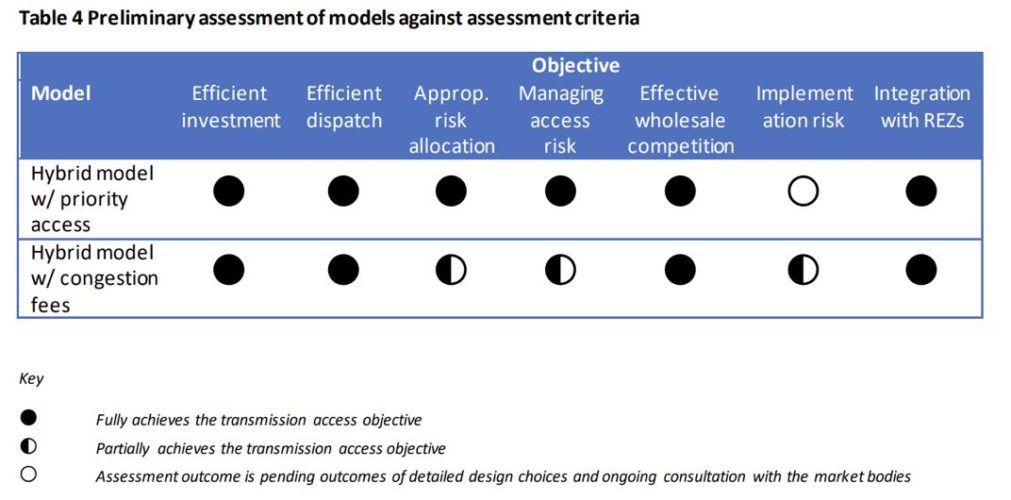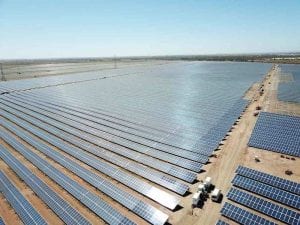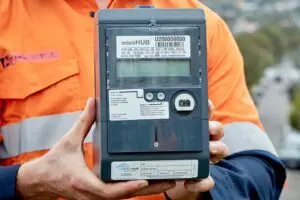Investors in Australia’s enormous pipeline of renewable energy projects have welcomed a decision by market authorities to consider a “hybrid” model as a solution to the problem of grid access and grid congestion.
The problems around grid congestion, and how to price access to the grid, is regarded as one of the biggest bollards in the face of the tens of billions of dollars of new wind, solar and storage projects needed to meet the country’s highly ambitious renewable energy targets, now set at 82 per cent by 2030.
As RenewEconomy wrote on Thursday, the $18.4 billion bid launched for Origin Energy, and bidder Brookfield’s plans to spend $20 billion on new wind, solar and storage projects in the next eight years underline the fact that capital is not in short supply – but accommodating rules and regulations are.
The renewable energy industry has been horrified by some of the proposals put forward by the Energy Security Board to solve the grid access problem, particularly its Congestion Management Model, and have been pushing for their own proposals to be considered.
That has now been accepted by the ESB, which has created some hybrid models as it goes through the painstaking process of what will be one of the most important updates to market rules that are finally being re-written to catch up with 21st century technologies.
The move by the ESB is seen as a sign by the industry that it has become more accommodating of other views, particularly after state and federal energy ministers slapped down its proposed and equally controversial capacity market proposals and effectively ordered it to be more consultative.
The details about grid access and grid management are incredibly complex, but important to get right. Several attempts at reforming the process have resulted in abject failure, such as the “do no harm” rules that put the emphasis on the last projects into the grid. It was quickly dumped.
The ESB does, however, have a point in suggesting that the existing rules need reform.
“New entrants have proceeded on the basis that they can cannibalised the access of projects that are already there,” it says in a newly published directions paper. “Investors have suffered as their projects are displaced by newer ones, sometimes only a short period after connecting.”
The NSW government has sought to address this issue with the creation of renewable energy zones, and the start of a 10-year series of auctions that will include the sale of access rights to the local grid – to stop that cannibalisation.
But rules are needed to guide installations outside of those zones, and in other states.
The ESB’s latest directions paper keeps its preferred CMM model – the one that the market doesn’t like – in reserve, but canvasses two new “hybrid options”, one that allows priority access and another with a congestion fee.
Both seem to tick a number of the boxes that require ticking (see table above), and the ESB says they deserve further consideration, but it does appear concerned that either of them may prove hard to implement in practice.
ESB chair Anna Collyer says access reform is inherently complex and all options require difficult trade-offs, but says that a failure to act will deliver a less orderly and more expensive transition for customers.
“With a 9-fold increase in utility-solar and wind, and 16GW of utility-scale storage expected under the ISP Step-change scenario by 2050, we are at a critical juncture to influence where we build our generation fleet of the future,” Collyer said in a statement.
“We must ensure we have a consistent framework that avoids inefficient overbuild and dispatch, provides more certainty to investors about likely curtailment levels, supports market- driven investment in storage and hydrogen, and ensures we make the best use of new transmission investments.
“Landing transmission access reform is key to achieving those objectives and delivering an orderly transition that supports the long-term interests of all consumers.
“It is vital we use our infrastructure efficiently to protect consumer interests. If we use our assets wastefully, we will need to invest more to achieve the same reliability, security and decarbonisation outcomes.”
Simon Corbell, the head of the Clean Energy Investment Group, said he welcomed the iinclusion of key elements of the CEIG Transmission Queue Model in the hybrid design released for consultation.
“There is clearly growing recognition by the ESB of the importance of addressing congestion to reduce the cost of capital for new clean energy investment in Australia,” Corbell said in a statement.
“We will be closely considering the detail of this complex consultation paper, and engaging with senior officials, the ESB and investors further.”











